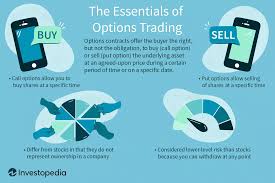Introduction
Options trading has become an increasingly popular strategy for investors looking to diversify their portfolios, hedge risk, or maximize returns. With the right knowledge and strategies, you can trade options like a pro in 2024. This guide will walk you through the fundamentals of options trading, advanced strategies, and essential tips to improve your success rate.
Understanding the Basics
Options are financial derivatives that provide the right, but not the obligation, to buy or sell an underlying asset at a predetermined price before or on a specific expiration date. There are two main types of options:
- Call Options – Give the holder the right to buy the asset at a set price (strike price) before the expiration date.
- Put Options – Give the holder the right to sell the asset at the strike price before the expiration date.
Why Trade Options?
Options trading offers several advantages, including:
- Leverage – Options allow traders to control a large number of shares with a smaller amount of capital.
- Flexibility – You can profit in rising, falling, or sideways markets.
- Hedging – Options can be used to protect against adverse price movements in other investments.
- Higher Profit Potential – Options provide the opportunity for significant returns in a short period.
Step-by-Step Guide to Trading Options Like a Pro
Step 1: Learn Key Options Terminology
To trade options successfully, you need to understand the essential terms:
- Strike Price – The price at which an option holder can buy or sell the asset
- In-the-Money (ITM) – When exercising the option would be profitable.
- Out-of-the-Money (OTM) – When exercising the option would not be profitable.
- At-the-Money (ATM) – When the stock price is equal to the strike price.
Step 2: Choose the Right Broker
A reliable broker is crucial for successful options trading. Consider factors such as:
- Low Fees & Commissions – To maximize your profits.
- Advanced Trading Tools – Charting tools, real-time data, and risk analysis features.
- Educational Resources – Webinars, tutorials, and market research reports.
Step 3: Master the Greeks
The “Greeks” are essential indicators of an option’s behavior:
- Delta – Indicates how much an option’s price will increase or decrease with a $1 move in the asset.
- Gamma – Shows how much delta will change for every $1 move in the underlying stock.
- Theta – Measures how much the option price declines over time (time decay).
- Vega – Indicates how sensitive the option price is to changes in volatility.
- Rho – Measures the impact of interest rate changes on option prices.
Step 4: Develop a Trading Strategy
Top traders rely on proven strategies to increase their success rates. Here are a few popular options trading strategies:
- Covered Calls – Selling call options against stocks you already own to generate income.
- Protective Puts – Buying put options to hedge against potential losses in a stock you own.
- Iron Condors – A combination of calls and puts that benefits from low volatility.
- Straddles & Strangles – Strategies designed to profit from significant price movements in either direction.
- Credit Spreads – Using a combination of long and short options to limit risk while generating consistent income.
Step 5: Manage Risk Effectively
Successful options traders focus on risk management to protect their capital. Key risk management techniques include:
- Position Sizing – Never risk more than a small percentage of your trading capital on a single trade.
- Stop-Loss Orders – Set predefined exit points to minimize losses.
- Hedging – Use options to offset risks in your portfolio.
- Avoid Overleveraging – Leverage can amplify gains but also increase losses.
Advanced Tips for Trading Like a Pro in 2024
- Use Technical and Fundamental Analysis – Combine technical indicators (moving averages, RSI, MACD) with fundamental analysis (earnings reports, economic data) to make informed decisions.
- Stay Updated on Market Trends – Monitor economic news, central bank policies, and earnings reports that can impact stock prices.
- Practice with Paper Trading – Many brokers offer virtual trading accounts where you can test strategies without risking real money.
- Monitor Implied Volatility – High volatility can inflate option premiums, while low volatility may reduce profit potential.
- Know Your Exit Strategy – Have a clear plan for taking profits and cutting losses before entering a trade.
- Diversify Your Trades – Don’t put all your capital into one option trade. Spread out your risk across different strategies and asset classes.
- Utilize Option Scanners – Use screening tools to identify the best options opportunities based on volatility, liquidity, and probability of success.
Common Mistakes to Avoid
- Ignoring Time Decay (Theta Decay) – Options lose value as they approach expiration, so timing is crucial.
- Holding Losing Trades Too Long – Cut losses early rather than hoping for a reversal.
- Failing to Account for Market Trends – Always align your options trades with broader market movements.
- Overcomplicating Strategies – Keep your trading strategies simple and easy to execute.
- Not Understanding Liquidity – Stick to options with high liquidity to ensure easy entry and exit.
Conclusion
Trading options like a pro in 2024 requires a strong understanding of the market, well-researched strategies, and effective risk management. By learning the fundamentals, mastering key strategies, and continuously improving your skills, you can increase your chances of success in options trading. Stay disciplined, remain patient, and always be willing to adapt to changing market conditions. Happy trading!
Would you like additional insights on any specific strategy or concept?
